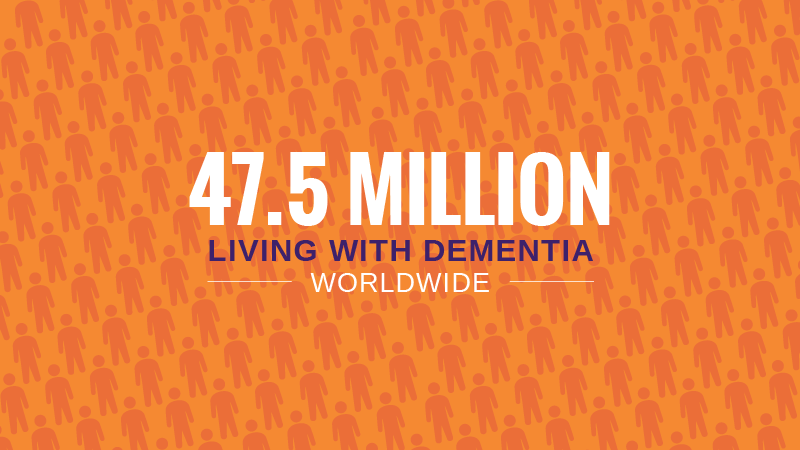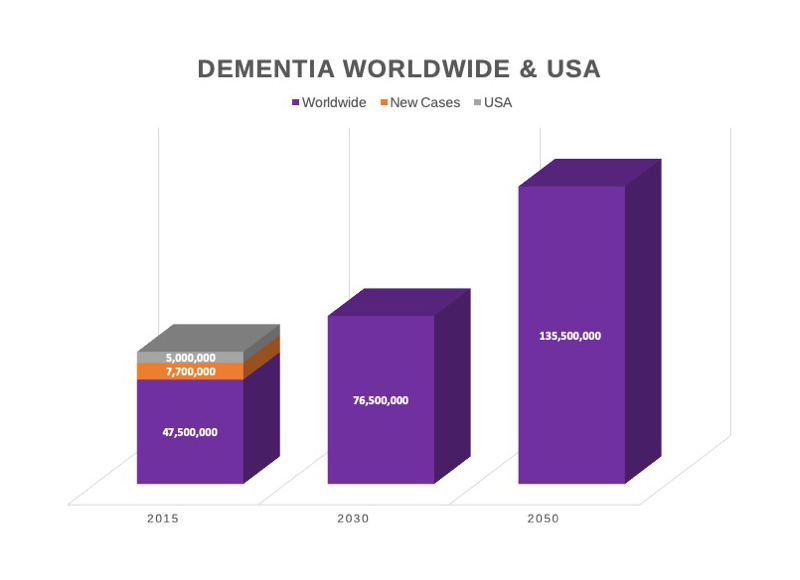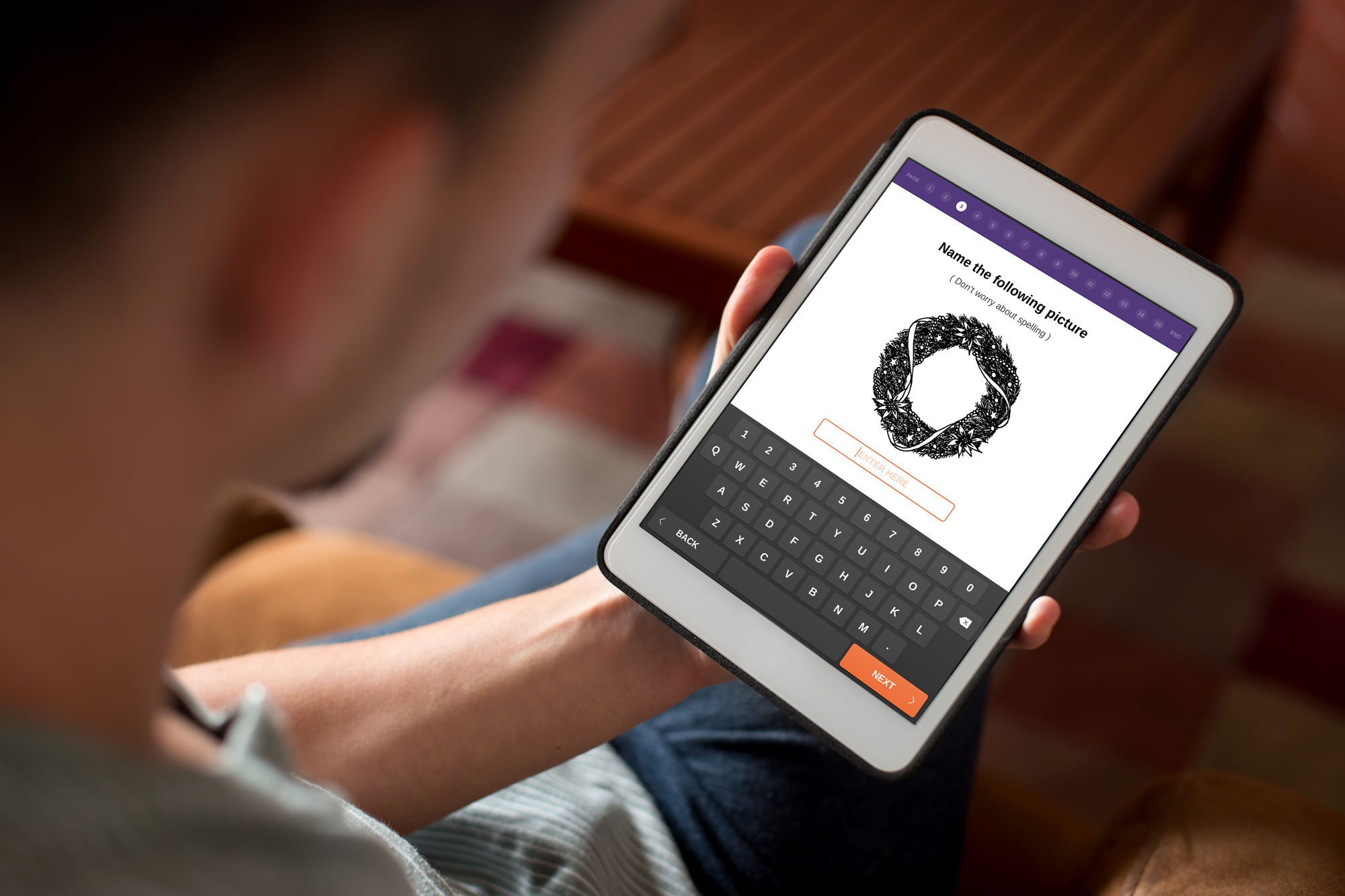
Dementia Statistics – U.S. & Worldwide Stats
You may personally know someone that’s affected by dementia, perhaps you have been diagnosed and are currently living with a related condition. Although this diagnosis can be frightening, it’s important to understand that you’re not alone. Across America alone, millions of individuals and their family members suffer from varying conditions which yield symptoms of dementia.
In fact, 7.7 million new cases are diagnosed every year, with 47.5 million people living with dementia worldwide. Based on the high number of individuals affected, dementia is one of the leading cause of dependency and mental impairment among the elderly population.

Dementia within the United States
Within the United States, there are at least 5 million people currently living with age-related dementias. As the population increases, these numbers are expected to rise. To put this into perspective, it’s estimated that one out of every six women and one out of every ten men, living past the age of 55 will develop dementia.
Although there are various forms of dementia, around 70 percent of cases are due to Alzheimer’s. Of the remaining cases, the second most common type is vascular dementia. Due to longer life expectancies and the baby boomer population, the percentage of Americans living with this disease will increase in the upcoming years.
How Dementia Affects People Worldwide
Of the 47.5 million people living with dementia, approximately 58 percent are living within low and middle-income countries. The rates of this syndrome are expected to continually rise, with estimates as high as 75.6 million cases by 2030 and a shocking 135.5 million by 2050.
A recent meta-analysis reported that the global prevalence of dementia is somewhere between 5 and 7 percent within people aged 60 or over. By the age of 85 years and older, between 25 and 50 percent of people display symptoms of dementia, more specifically Alzheimer’s.
Economic Impact of Dementia
Worldwide, dementia is believed to have cost approximately $818 billion in 2015. These costs include unpaid care by family members, social care, and medical costs. Costs associated with direct medical themselves, account for around 20 percent of global costs.
The greatest cost is informal care, especially within African regions and lower in North American, South American, and Western European countries. With that being said, these countries spend more on social costs, such as professional care and residential home care.
What Can You Do Today?

Early screening is by far the most effective way to help detect Alzheimer’s and other types of dementia. Early detection of dementia may be able to allow intervention to ameliorate or delay the onset of symptoms. This can improve the overall quality of life for both you and your loved ones. While there is currently no cure for dementia, there are several medications that can help treat symptoms. Knowing sooner can also allow you to make many important decisions, such as planning for long-term care, and organizing estate affairs.
Currently, the easiest and most convenient way to screen for Alzheimer’s and dementia is by using the BrainTest® app. The app offers an easy-to-use electronic version of the SAGE test, a test designed by The Ohio State University Wexner Medical Center to detect early signs of cognitive, memory or thinking impairments. Screen early and take control of your brain health today.
References
Pennington Biomedical Research Center. FAQ. Institute for Dementia Research & Prevention. Retrieved from http://idrp.pbrc.edu/faq.htm
WHO. (2015). Dementia. World Health Organization. Retrieved from http://www.who.int/mediacentre/factsheets/fs362/en/